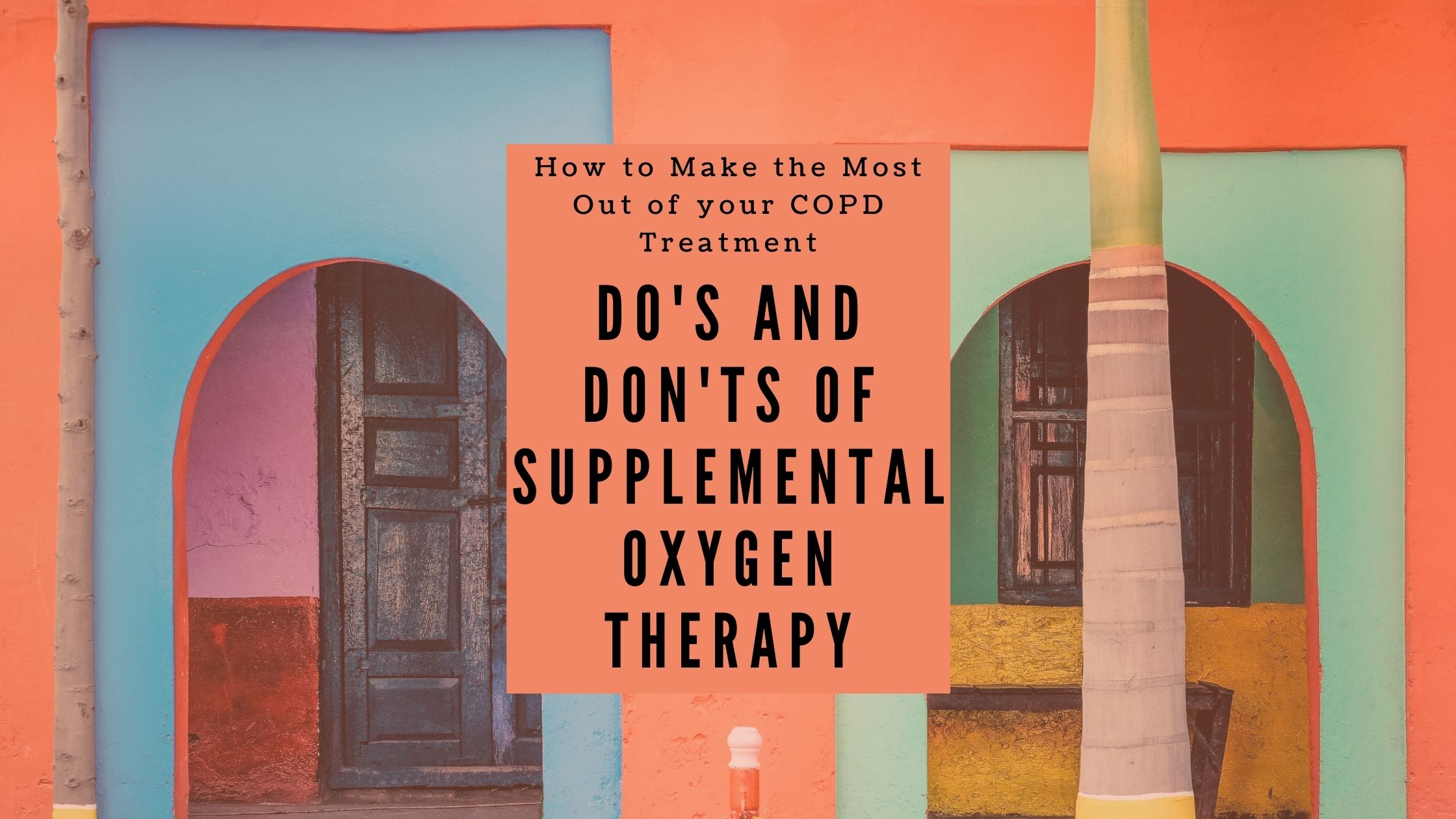
If you have COPD or another disease that is causing low blood oxygen levels supplemental oxygen therapy can be a life saver, quite literally. If done correctly you can add years to your life simply by adhering to your oxygen prescription. Beyond taking your oxygen as prescribed, you can start to eat healthier, stop smoking, and start exercising all of which are habits that will contribute to a healthy and long life with a respiratory illness.
In this article we are focusing on supplemental oxygen as a treatment for COPD.
Research shows that oxygen is the only drug that can prolong life in patients with chronic obstructive pulmonary disease (COPD). In fact, oxygen not only prolongs life, it improves the quality of life and has numerous health benefits for people with chronic low oxygen levels due to a variety of diseases.
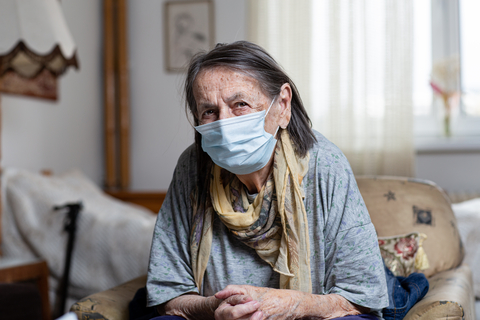
Despite all of the research suggesting oxygen can make your life living with COPD more comfortable and enjoyable, some people still struggle with oxygen therapy and claim it is uncomfortable, it is limiting, and weighs them down. We wrote this article for those people who feel they are not living out the benefits oxygen therapy has to offer.
Many people live happy joyful lives traveling, exploring new relationships, trying new and exciting things, all while managing and treating their COPD. People who can live with such an invasive and chronic illness still have their hardships, but they are also committed to their treatment plan for COPD daily which makes living with this disease more manageable.
{{cta('fa8abc2a-1e88-4fa3-82fd-1cb5b9ed43b2','justifycenter')}}
In this article we are going to explain the do’s and don’ts of oxygen therapy so that you can start managing your COPD to the best of your ability, and finally start reaping the benefits oxygen therapy has to offer.
What is oxygen therapy?
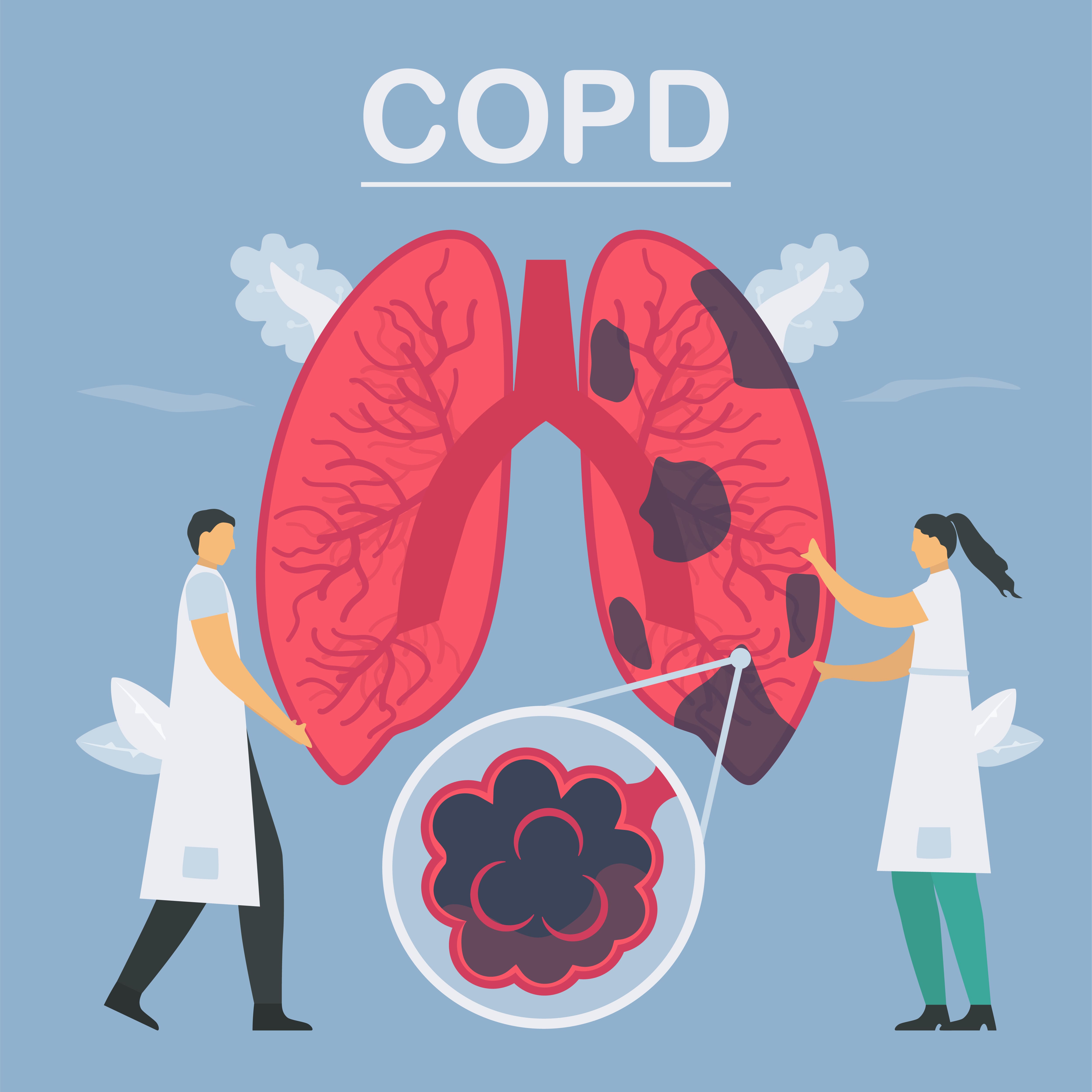
The overarching goal for your oxygen therapy is to ensure that you maintain adequate blood oxygen levels under all conditions, all day and all night. The duration of oxygen you need and the flow setting you should use for your oxygen delivery is determined by your doctor.
They will test you while you are resting and during activities. If your blood oxygen levels are calculated to be lower than the normal range at rest, continuous oxygen delivery, meaning for 24-hours a day, is the single most important treatment, above eating healthy and exercising, that can prolong your life.
By getting you blood oxygen levels back to a normal level while you sleep, exercise, and do daily activities, your body will not have to suffer through the negative consequences of intermittent or chronic low blood oxygen levels that COPD poses.

There are three main forms of home oxygen therapy. You can take it in gas form via an oxygen cylinder (the old-fashioned bullet-shaped metal tanks), in liquid form via a barrel-shaped metal tank that converts the liquid to gas upon release, or via a portable oxygen concentrator which extracts oxygen from your environmental air and compresses it into medical-grade oxygen.
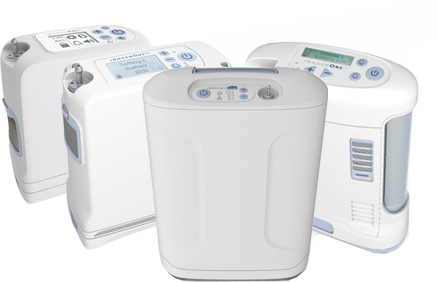
Your doctor will work with you to decide what your oxygen needs are and your oxygen supply company will work with you and your doctor to find the best device to fit your needs. They will write you a prescription for the exact flow rate (liters per minute), frequency, and delivery system that is the best fit for you.
Do's and Don'ts
Don’t take more or less of your oxygen unless directed otherwise by your doctor
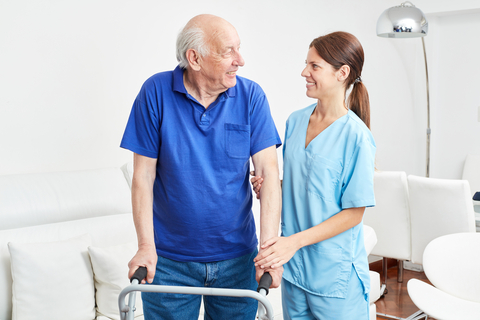
Oxygen is not just a gas making up a part of the air we breathe, it is a medicine. Supplemental oxygen is prescribed by your doctor, and just like other medications, it should only be taken under your doctor’s direction.
Oxygen saturation is usually considered to be normal if it is above 90% for a healthy individual living at sea level, however your doctor should be able to determine what the normal level of oxygen saturation is dependent upon your condition and individual characteristics. Typically, if your oxygen saturation is below 88% without oxygen, you will likely be prescribed supplemental long term oxygen therapy (LTOT).
When you are prescribed oxygen, your doctor will measure your blood oxygen levels while you are at rest, while you exercise, and while you sleep or rest. Some people will require supplemental oxygen continuously; others only require it intermittently or only during the night.

The specific frequency and duration you need supplemental oxygen during the day and night is dependent upon your pulmonary function tests (PFTs) that are performed by your doctor. In individuals with COPD, hypoxia in the lungs means oxygen levels become extremely low, and if you do not take your oxygen when you are supposed to, or you leave it at a low setting that does not match your prescription, your lungs and furthermore your organs will not get enough oxygen. This will cause damage and injury throughout your body.
It is also possible for oxygen users to use too much oxygen, causing a condition called oxygen toxicity. This is seen in deep sea divers, premature babies, and patients with COPD who inaccurately utilize their oxygen supply when there is high exposure to high concentrations of oxygen. You should carefully monitor yourself for signs and symptoms of oxygen toxicity throughout your treatment, especially when you first start oxygen therapy.
Signs of too much oxygen and symptoms of oxygen toxicity include:
- Headache
- Hiccups
- Shivering
- tingling in the limbs
- Vision
- hearing changes
- Fatigue
- Hyperventilation
If you continue to abuse your oxygen supply, and the high exposure to oxygen continues, vertigo and nausea will occur, followed by behavioral changes (irritability, anxiety, confusion), clumsiness and eventually convulsions.
Even though it is possible to get too much oxygen from your oxygen concentrator it is unlikely when you use your oxygen concentrator as it has been directed and prescribed to you.
This is hugely why all oxygen supply companies will require a prescription from your doctor, and why your doctor should choose your oxygen prescription based on valid results from your pulmonary tests. Your doctor will prescribe the lowest possible concentration to you that will still provide therapeutic benefits, in order to avoid symptoms of too much oxygen but also make sure your blood oxygen levels get back to normal.
Do be sure to have an oxygen device that can cover your needs should they increase over-time
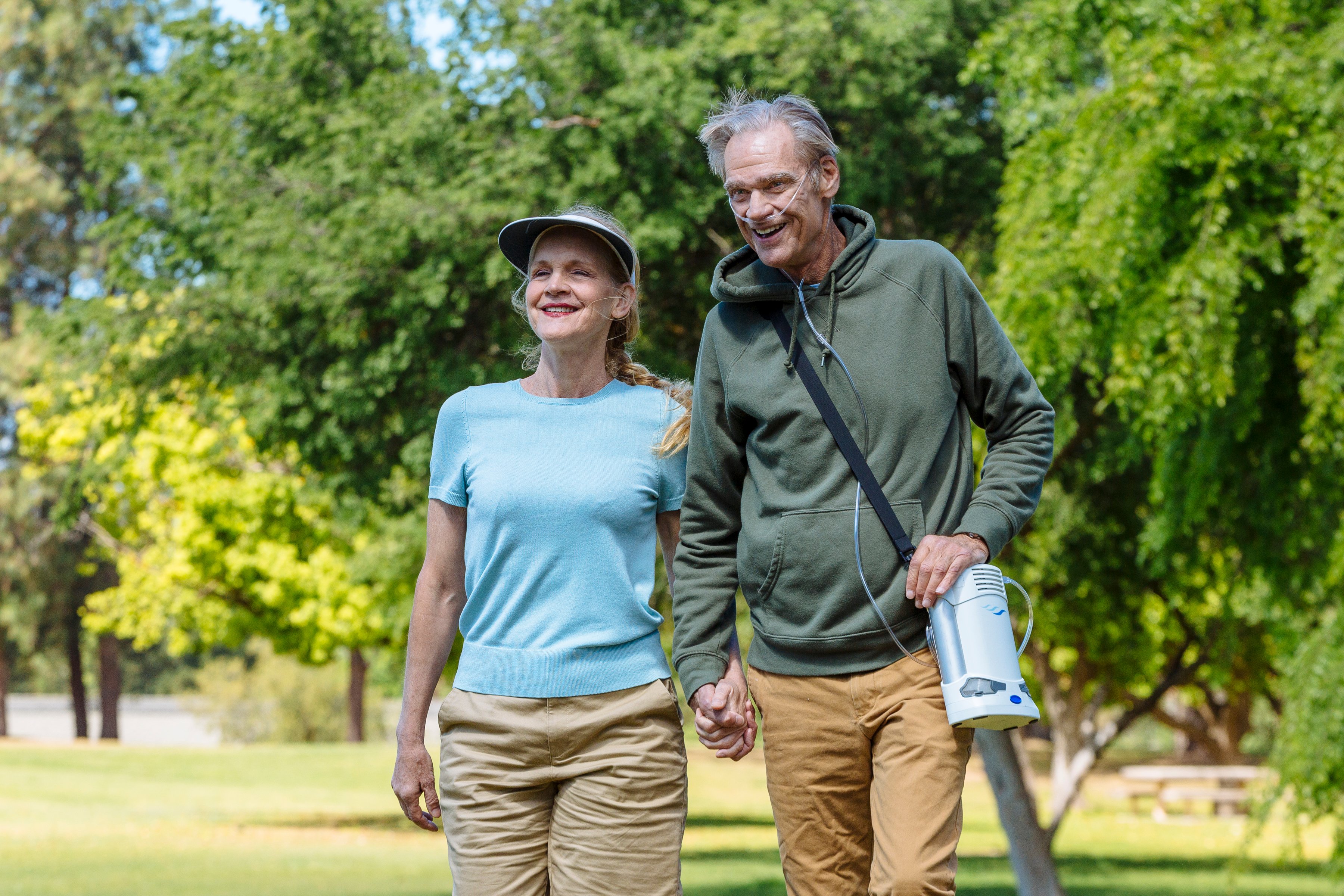
If you have COPD, and you see your doctor regularly, one of the tests they will look for is determining the severity of your COPD and how it has progressed since they last saw you.
Because CODP is a chronic illness, there is no cure, and it also progresses over time, meaning you may not need supplemental oxygen now, but one day you might. And if you have an oxygen prescription now, that might change in the future should the prescription no longer fulfill your body’s oxygen requirements and it will need to be increased.
This is why it is important when you are in the market for an oxygen device, specifically while you shop for a portable oxygen concentrator that the machine is capable of increasing its oxygen output beyond your oxygen requirements at the time. If you have a reliable sales person and you are purchasing the device from an licensed distributor of medical equipment, this will be one of the main priorities both you and the company's representative should be looking into: the device's flow rates and its capabilities to fulfill you oxygen requirements and beyond.
You may also need to increase your oxygen prescription in the case of an emergency or if you are experiencing a mild to severe COPD exacerbation where your symptoms are escalated. Your doctor will inform you of when and why you should increase your oxygen output in these scenarios and you should feel confident in doing so. If you do not, you should speak with your doctor or other healthcare specialists that you work with closely to ensure you know this protocol.
As we mentioned above, taking too much oxygen or not getting enough, are both harmful practices that will impose harmful side effects on your body.
Do not smoke
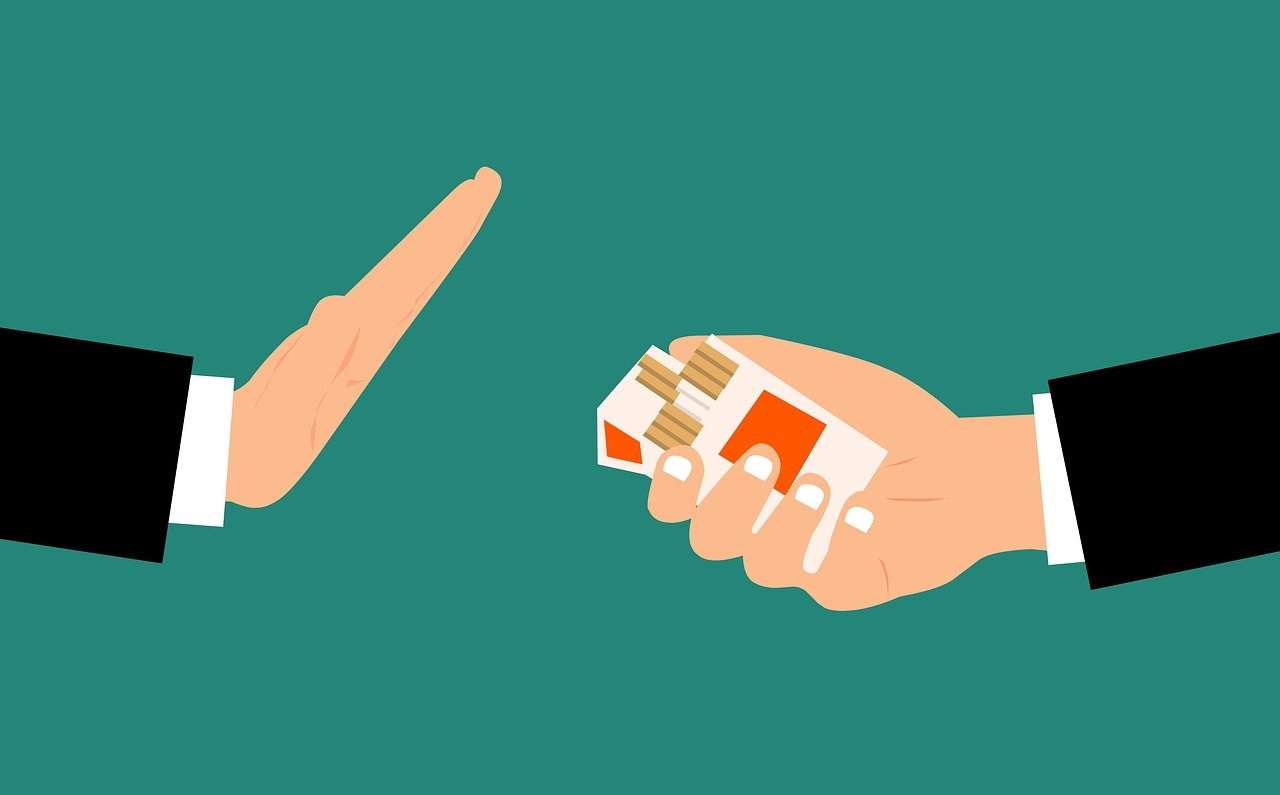
Everyone is going to tell you to quit smoking if you have COPD. While it is too late to reverse your disease, it is not too late to stop it from progressing into a more severe state, and the single most important thing to do is to quit smoking or quit being around smoke.
It is also important to quit smoking if you use supplemental oxygen for a few reasons. The first being that it is unsafe for you and the people in your home and vicinity. Especially if you use oxygen cylinders or liquid tanks, because these methods of oxygen delivery create an oxygen-rich environment. Oxygen is a flammable gas, and a cigarette or a lighter near a flammable gas is just bad news all together.
You should make sure to notify your fire department that you are an oxygen user, and let them know the method of oxygen delivery you use. Confirm that you have a fire extinguisher inside your home, and functioning smoke alarms, all of which are precautionary measures should a fire ever occur.
This is also a great place to note that you should stay at least 10 feet away from open flames, such as a fireplace, gas heater or stove, candles, etc.
Do ask a lot of questions
COPD is confusing! And there is no one right answer for everyone! So ask questions until you are comfortable and confident in all of your endeavors including home oxygen therapy.
Ask your doctor questions about your treatments, medications, and prescriptions. Ask them where you can get involved with a pulmonary rehabilitation course. Ask them to go over your action plan for a COPD exacerbation, and then ask them again. If you have a disease like COPD, you must be in the know at all times, and feel fully confident of what is going on inside your body so you know what to look out for when something changes.
Here is a great resource about communicating with your doctor, and asking the questions you might not even know to ask: COPD Education is Key: 15 Questions you Need to ask your Doctor

When you are shopping for a portable oxygen concentrator, or another form of oxygen therapy, ask your respiratory specialist about the reasons they recommend one portable oxygen concentrator over another.
Why the Caire FreeStyle Comfort fits your friend’s oxygen requirements but you require something more powerful like the Respironics SimplyGo. Ask them questions about traveling with a portable oxygen concentrator compared to oxygen tanks. Ask them how you can charge your portable device’s batteries while you’re at home or in the car.
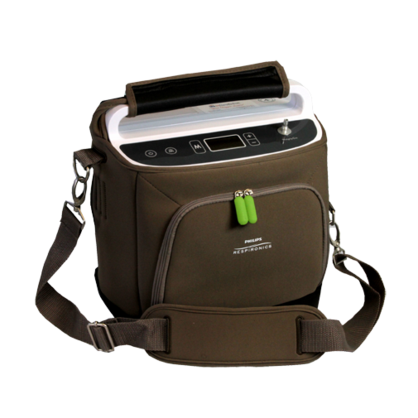
If you get your oxygen delivered be sure to closely monitor your gauges on your oxygen equipment so you are never running low. Promptly notify your oxygen supplier with plenty of time for them to deliver refills, and upon delivery be sure to ask questions of your oxygen delivery person.
If you're new to oxygen therapy, or are thinking about changing your oxygen method to a more portable system, call us at 1-(800)-946-1201, and we will help you decide on the best portable oxygen concentrator that fits your needs, and also makes your life easier. If you have questions about how much portable oxygen concentrators costs, you will not find the true answer online.
A basic google search will take you to pages that lists these devices anywhere from $2,000 - $3,000, for example the Inogen One G5 is listed on google for almost $3,000. This is because the manufacturers require its distributors to only advertise their devices at set prices, and so the best way to get accurate prices is to call and speak with a respiratory specialist over the phone.
Don’t be careless with storing and transporting your oxygen
If you use an oxygen cylinder or liquid oxygen tanks, you have to store the devices properly. They cannot fall over, and should remain upright and tied into place while being transported.
If you have an oxygen concentrator, you should be careful with the device naturally, but if you are prone to being clumsy or dropping your things, having a durable portable oxygen device should be on your list of priorities.
If you are worried about breaking your portable oxygen device, you might want to consider a device like the SeQual Eclipse 5 which is one of the most, if not the most, popular continuous flow portable oxygen concentrators on the market. That is largely due to its long-standing track record for being durable and reliable as it was intentionally created for the US Military. The hard-bodied shell of the Eclipse 5 is extremely protective. It will keep your concentrator protected from everyday wear and tear, accidental bumps and bruises, and if you have pets or grandkids in the house it will be able to withstand their crazy antics.
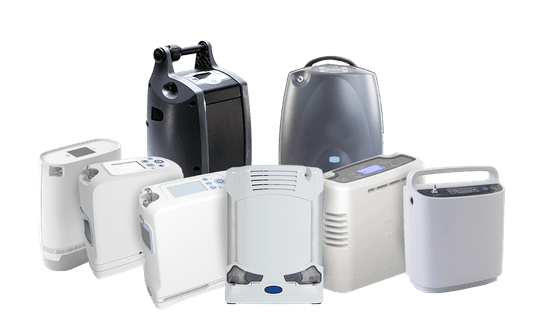
The Invacare Platinum Mobile is another durable pulse flow portable oxygen concentrator built for mobility and designed to withstand the trials of everyday life. This concentrator has a rugged design with reinforced bumpers and cushions to protect the unit from daily wear and tear. It contains a foam encapsulated compressor and latch-free doors to absorb shock because sometimes occasional bumps can simply be unavoidable, it is even water resistant!
Don’t run low on oxygen

As we have mentioned in this article, it is critical for you to take your oxygen as prescribed, so running lower on your oxygen supply or running low on the batteries, is not a good practice.
If you use an oxygen canister, or oxygen tanks, always put an order in for your delivery service to have them refilled before you run out.
If you have a portable oxygen concentrator, be sure to keep your device charged, and try to avoid letting the battery die in order to preserve the overall battery life. You can also notify your local utility company and let them know that you have an oxygen concentrator in use, so that you will be given priority during power outages. You may also want to consider buying a backup generator in the event of power outages, so you are still bale to charge your breathing device's batteries.
Do’s and don’ts for using liquid oxygen
Here are some additional factors you should know while using liquid oxygen:
DON'T tip the device or lean it, make sure it is stable and upright at all times, or the liquid can leak out
DO keep the tank at least 5 feet away from space heaters, electric or gas heaters, steam pipes, furnaces, and radiators
Do’s and don’ts for using oxygen concentrators
Here are a few more tips for using an oxygen concentrator:
DON’T ever use an extension cord to plug in your concentrator and do not plug anything else into the same outlet while you are charging your device
DO keep the unit about 6 inches away from the wall curtains or anything else that might obstruct the filter and prevent air circulation around it; this will also help avoid heat build up
DON'T cover the unit with anything like blankets or towels; this will also help avoid heat build up
If you would like more tips and tricks for making supplemental oxygen therapy more enjoyable overall click here to read How to Make Supplemental Oxygen More Comfortable
Overview
Oxygen therapy can be of great benefit to you and you loved ones. It can give you the energy and strength you need to start doing the things you love to do again. With certain oxygen device like portable oxygen concentrators , you can travel by plane, and easily carry with you to run errands or exercise.
All oxygen therapy methods share a similar goal, and that is to get your blood oxygen levels back to a normal rate. If you need your therapy to do even more for you in order to be satisfied, you should talk to you doctor about the possibilities of switching to a portable oxygen concentrator, so you can start getting more than just the essentials from your tanks or canisters.
Until then, we hope that you have found some useful information that you can bring home with you to make the most out of your oxygen therapy and start living the life you want to, whether thats being more active, having more energy, or coping with your COPD more effectively.

